
Harry Manders is a fictional character in the popular series of Raffles stories by E. W. Hornung. He is the companion of A. J. Raffles, a cricketer and gentleman thief, who makes a living robbing the rich in late Victorian British High Society.

The Black Mask is a 1901 short story collection by E. W. Hornung. It was published in the UK by Grant Richards, London, and in the US by Scribner's, New York under the title Raffles: Further Adventures of the Amateur Cracksman. It is the second collection of stories in Hornung's series concerning A. J. Raffles, a gentleman thief in late Victorian London.

The Amateur Cracksman is an 1899 short story collection by E. W. Hornung. It was published in the UK by Methuen & Co., London, and in the US by Scribner's, New York. Many later editions expand the title to Raffles: The Amateur Cracksman. Some editions such as Penguin Books, 1948, retitle the collection simply, Raffles.

A Thief in the Night is a 1905 collection of short stories by E. W. Hornung. It was published in the UK by Chatto & Windus, London, and in the US by Scribner's, New York.

"A Trap to Catch a Cracksman" is a short story by E. W. Hornung, and features the gentleman thief A. J. Raffles, and his companion and biographer, Bunny Manders. The story was published in July 1905 by Pall Mall Magazine in London. The story was also included as the seventh story in the collection A Thief in the Night, published by Chatto & Windus in London, and Charles Scribner's Sons in New York, both in 1905.
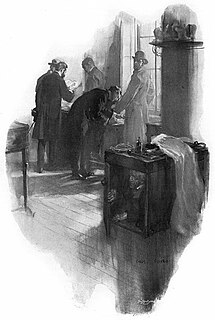
"The Raffles Relics" is a short story by E. W. Hornung, and features the gentleman thief A. J. Raffles, and his companion and biographer, Bunny Manders. The story was published in September 1905 by Pall Mall Magazine in London. The story was also included as the eighth story in the collection A Thief in the Night, published by Chatto & Windus in London, and Charles Scribner's Sons in New York, both in 1905.

Raffles, the Amateur Cracksman (1925) is a feature length silent adventure crime drama/romance motion picture starring House Peters, Miss DuPont, Hedda Hopper, Fred Esmelton, and Walter Long.
The Return of A. J. Raffles, first produced and published in 1975, is an Edwardian comedy play in three acts, written by Graham Greene and based somewhat loosely on E. W. Hornung's characters in The Amateur Cracksman. Set in the late summer of the year 1900, the story revolves around the infamous burglar and cricketer, A. J. Raffles—presumed dead in the Boer War—who returns to Albany where, with his friends Bunny and Lord Alfred Douglas, he plots to rob the Marquess of Queensberry, partly for the money and partly for revenge against the Marquess for his treatment of their friend Oscar Wilde. The robbery takes place at the Marquess' house in Hertfordshire, where Raffles and Bunny are interrupted by the Prince of Wales and a Scotland Yard detective, who discover the Prince's personal letters have also been stolen.
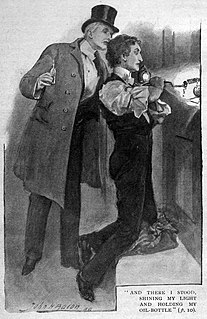
Arthur J. Raffles is a fictional character created in 1898 by E. W. Hornung, brother-in-law of Sir Arthur Conan Doyle, the creator of Sherlock Holmes. Raffles is, in many ways, an inversion of Holmes – he is a "gentleman thief", living at the Albany, a prestigious address in London, playing cricket as a gentleman for the Gentlemen of England and supporting himself by carrying out ingenious burglaries. He is called the "Amateur Cracksman" and often, at first, differentiates between him and the "professors" – professional criminals from the lower classes.
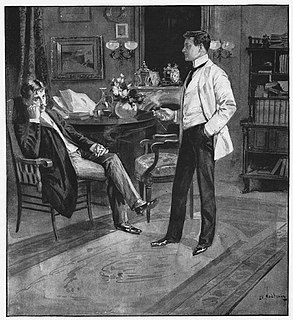
"The Ides of March" is a short story by E. W. Hornung, and the first appearance of the gentleman thief A. J. Raffles, and his companion and biographer, Bunny Manders. The story was first published in June 1898 by Cassell's Magazine. The story was also included in the collection The Amateur Cracksman, published by Methuen & Co. Ltd in London, and Charles Scribner's Sons in New York, both in 1899.
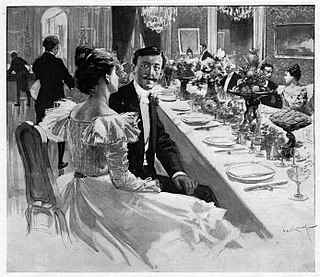
"Gentlemen and Players" is a short story by E. W. Hornung, and features the gentleman thief A. J. Raffles, and his companion and biographer, Bunny Manders. The story was first published in August 1898 by Cassell's Magazine. The story was also included in the collection The Amateur Cracksman, published by Methuen & Co. Ltd in London, and Charles Scribner's Sons in New York, both in 1899.

"Nine Points of the Law" is a short story by E. W. Hornung, and features the gentleman thief A. J. Raffles, and his companion and biographer, Bunny Manders. The story was first published in September 1898 by Cassell's Magazine. The story was also included as the six story in the collection The Amateur Cracksman, published by Methuen & Co. Ltd in London, and Charles Scribner's Sons in New York, both in 1899.
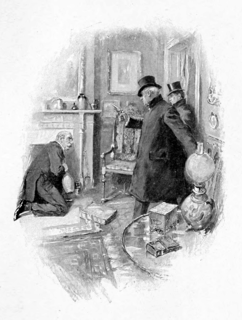
"To Catch a Thief" is a short story by E. W. Hornung, and features the gentleman thief A. J. Raffles, and his companion and biographer, Bunny Manders. The story was first published in Scribner's Magazine in May 1901. The story was also included as the fifth story in the collection The Black Mask, published by Grant Richards in London, and Charles Scribner's Sons in New York, both in 1901.

"The Wrong House" is a short story by E. W. Hornung, and features the gentleman thief A. J. Raffles, and his companion and biographer, Bunny Manders. The story was first published in Scribner's Magazine in September 1901. The story was also included as the seventh story in the collection The Black Mask, published by Grant Richards in London, and Charles Scribner's Sons in New York, both in 1901.
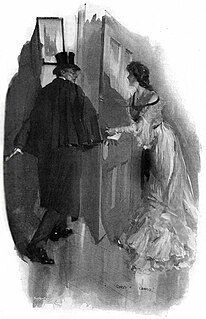
"Out of Paradise" is a short story by E. W. Hornung, and features the gentleman thief A. J. Raffles, and his companion and biographer, Bunny Manders. The story was first published in December 1904 by Collier's Weekly in New York, and in January 1905 by Pall Mall Magazine in London. The story was also included as the first story in the collection A Thief in the Night, published by Chatto & Windus in London, and Charles Scribner's Sons in New York, both in 1905.

"The Chest of Silver" is a short story by E. W. Hornung, and features the gentleman thief A. J. Raffles, and his companion and biographer, Bunny Manders. The story was published in January 1905 by Collier's Weekly in New York, and in February 1905 by Pall Mall Magazine in London. It was also included as the second story in the collection A Thief in the Night, published by Chatto & Windus in London, and Charles Scribner's Sons in New York, both in 1905.
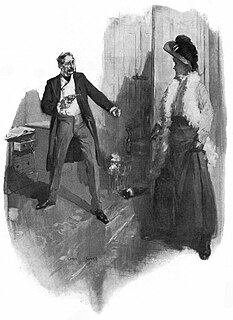
"The Rest Cure" is a short story by E. W. Hornung, and features the gentleman thief A. J. Raffles, and his companion and biographer, Bunny Manders. The story was published in February 1905 by Collier's Weekly in New York and in March 1905 by Pall Mall Magazine in London. The story was also included as the third story in the collection A Thief in the Night, published by Chatto & Windus in London, and Charles Scribner's Sons in New York, both in 1905.

"The Field of Philippi" is a short story by E. W. Hornung, and features the gentleman thief A. J. Raffles, and his companion and biographer, Bunny Manders. The story was published in April 1905 by Collier's Weekly in New York and in May 1905 by Pall Mall Magazine in London. The story was also included as the fifth story in the collection A Thief in the Night, published by Chatto & Windus in London, and Charles Scribner's Sons in New York, both in 1905.
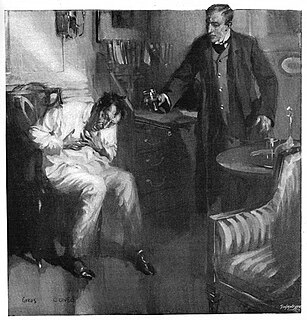
"A Bad Night" is a short story by E. W. Hornung, and features the gentleman thief A. J. Raffles, and his companion and biographer, Bunny Manders. The story was published in June 1905 by Pall Mall Magazine in London. The story was also included as the sixth story in the collection A Thief in the Night, published by Chatto & Windus in London, and Charles Scribner's Sons in New York, both in 1905.
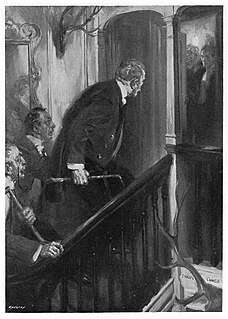
"The Spoils of Sacrilege" is a short story by E. W. Hornung, and features the gentleman thief A. J. Raffles, and his companion and biographer, Bunny Manders. The story was published in August 1905 by Pall Mall Magazine in London. The story was also included as the seventh story in the collection A Thief in the Night, published by Chatto & Windus in London, and Charles Scribner's Sons in New York, both in 1905.



















